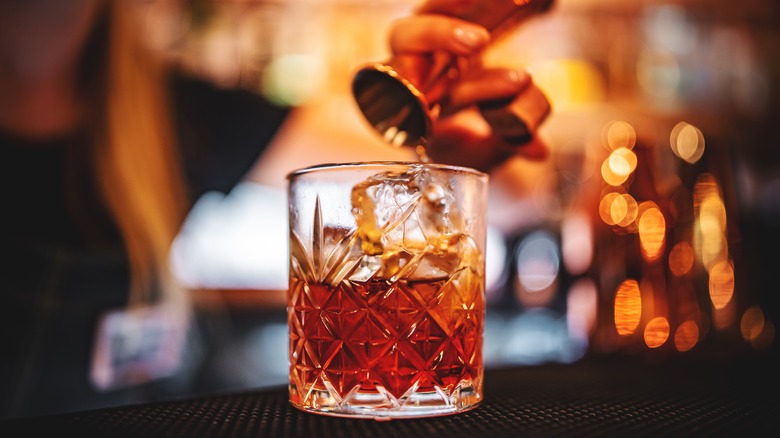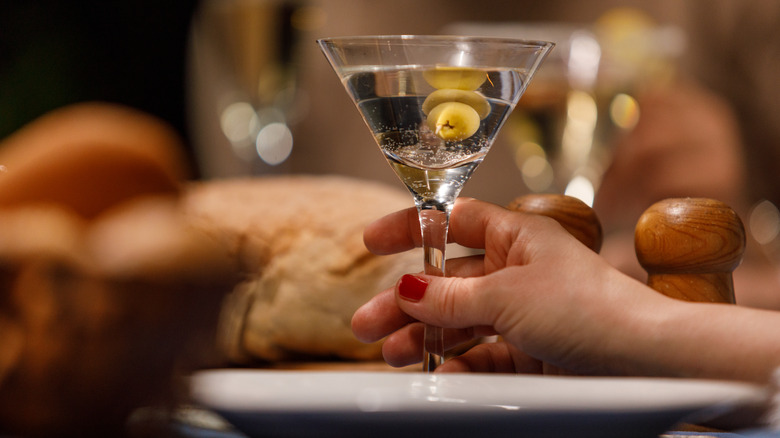How Much Vermouth Is Too Much In A Cocktail?
Besides the five basic liquors stashed in the well at a bar — tequila, vodka, rum, whiskey, and gin — the most common ingredient in the cabinet is probably vermouth. In most American dives, patrons aren't ordering it on the rocks; its main purpose is to be a building block in cocktails. Even if you love a touch of vermouth in your drinks, though, you'd do best not to overdo it.
There's a lot to know about vermouth, but the basics are that it's a fortified wine (wine plus a neutral spirit) infused with aromatics, primarily wormwood, the same stuff in absinthe. Vermouth can be Italian (sweeter with a red color) or French (dry with a clear hue), but even the sweeter variety has dry, botanical flavors and a not-so-negligible 13% to 22% alcohol by volume. It's a subtle yet powerful ingredient, and a little can go a long way.
Perhaps the most famous vermouth cocktail is the martini. The terms "dry" or "wet" martini refer to how much vermouth is used (drier means less vermouth). Without enough vermouth, a martini is little more than a glass of gin with an olive — but with too much, this clean and balanced drink becomes too floral and herbal. Think of vermouth as the Oscar winner for Best Supporting Actor: Just because it isn't in the spotlight doesn't mean the show can go on without it. If you're using more than 1 ½ ounces in your cocktail, though, it's probably too much.
One and a half ounces is the sweet spot
Spirit-forward cocktails (ones without mixers like fruit juice or soda water) contain roughly three fluid ounces in total, so you would rarely need more than 1 ½ ounces of vermouth to get the job done. Even the two-parter Americano, a 1:1 ratio of sweet vermouth and Campari, only uses 1 ½ ounces of each, and plenty of drinks use less.
Making a great cocktail is about achieving balance, so the amount of vermouth depends on the strength of the other ingredients. The wine lends a spiced dimensionality to the floral Bénédictine liquor in a Vieux Carré, and prevents punchy Manhattans and martinis from tasting overpoweringly alcohol-forward. If you want to play up the qualities that vermouth creates in these drinks, be sparing. Familiarize yourself with the other ingredients, and only add more than 1 ½ ounces if you're sure that it won't throw off the balance of flavors. It's all too easy to go into sweet, botanical overkill.
As for drinks that use vermouth in smaller quantities, in Negroni and Boulevardiers, sweet vermouth is a smaller player meant to counterbalance Campari's citrusy bitterness, so you would only need about 1 ounce. Similarly, a "perfect" martini uses ½ ounce dry vermouth and ½ ounce sweet (and you wouldn't mess with perfection, right?). The milder Blood & Sand and Rob Roy cocktails use just ¾ ounce of vermouth. Generally speaking, these drinks should be kept this way — jacking up the vermouth would erase their subtle balance.

